Higher classification Fungus | Scientific name Glomeromycota Rank Division | |
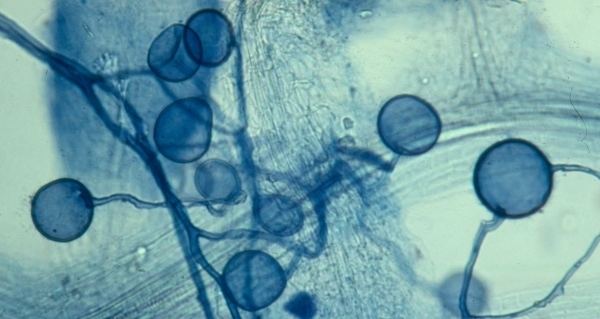 | ||
Similar Glomus, Chytridiomycota, Zygomycota, Rhizophagus irregularis, Blastocladiomycota Similar Rhizophagus irregularis, Geosiphon, Chytridiomycota | ||
Glomeromycota
Glomeromycota (informally glomeromycetes) is one of eight currently recognized divisions within the kingdom Fungi, with approximately 230 described species. Members of the Glomeromycota form arbuscular mycorrhizas (AMs) with the roots or thalli (e.g. in bryophytes) of land plants. Geosiphon pyriformis forms an endocytobiotic association with Nostoc cyanobacteria, and is the only member of the Glomeromycota known not to form arbuscular mycorrhiza in association with plants. AM formation has not yet been shown for all species. The majority of evidence shows that the Glomeromycota are symbionts with land plants (Nostoc in the case of Geosiphon) for carbon and energy, but there is recent circumstantial evidence that some species may be able to lead an independent existence. The arbuscular mycorrhizal species are terrestrial and widely distributed in soils worldwide where they form symbioses with the roots of the majority of plant species (>80%). They can also be found in wetlands, including salt-marshes, and associated with epiphytic plants.
Contents
- Glomeromycota
- Medical vocabulary what does glomeromycota mean
- Reproduction
- Phylogeny
- Molecular biology
- References
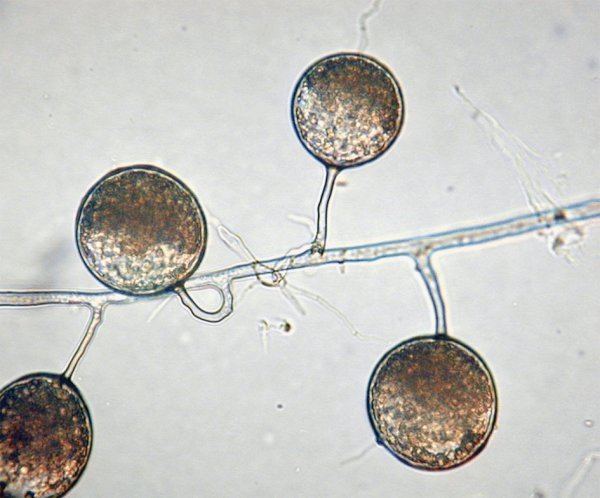
Medical vocabulary what does glomeromycota mean
Reproduction

The Glomeromycota have generally coenocytic (occasionally sparsely septate) mycelia and reproduce asexually through blastic development of the hyphal tip to produce spores (Glomerospores) with diameters of 80–500 μm. In some, complex Spores form within a terminal saccule. Recently it was shown that Glomus species contain 51 genes encoding all the tools necessary for meiosis. Based on these and related findings, it was suggested that Glomus species may have a cryptic sexual cycle.
Phylogeny
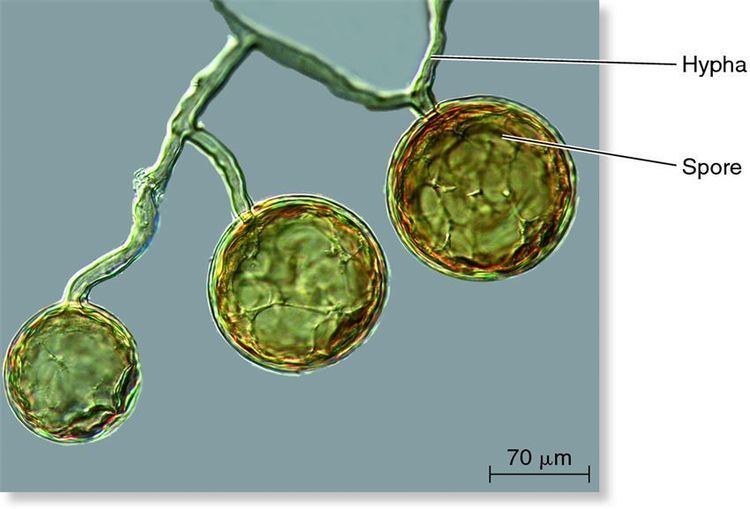
Initial studies of the Glomeromycota were based on the morphology of soil-borne sporocarps (spore clusters) found in or near colonized plant roots. Distinguishing features such as wall morphologies, size, shape, color, hyphal attachment and reaction to staining compounds allowed a phylogeny to be constructed. Superficial similarities led to the initial placement of genus Glomus in the unrelated family Endogonaceae. Following broader reviews that cleared up the sporocarp confusion, the Glomeromycota were first proposed in the genera Acaulospora and Gigaspora before being accorded their own order with the three families Glomaceae (now Glomeraceae), Acaulosporaceae and Gigasporaceae.
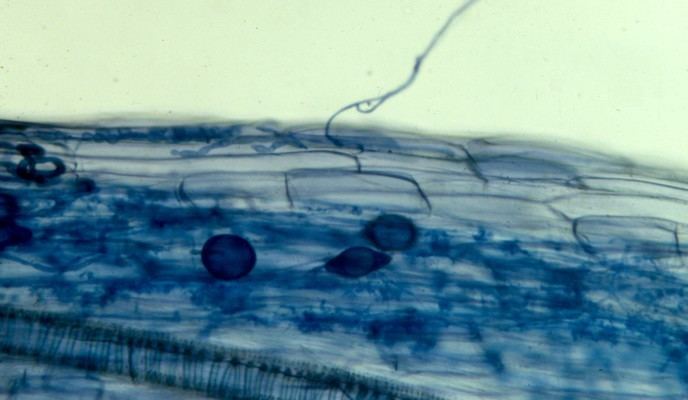
With the advent of molecular techniques this classification has undergone major revision. An analysis of small subunit (SSU) rRNA sequences indicated that they share a common ancestor with the Dikarya. Nowadays it is accepted that Glomeromycota consists of 4 orders.
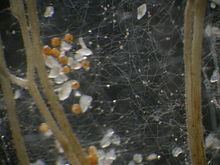
Several species which produce glomoid spores (i.e. spores similar to Glomus) in fact belong to other deeply divergent lineages and were placed in the orders, Paraglomerales and Archaeosporales. This new classification includes the Geosiphonaceae, which presently contains one fungus (Geosiphon pyriformis) that forms endosymbiotic associations with the cyanobacterium Nostoc punctiforme and produces spores typical to this division, in the Archaeosporales.
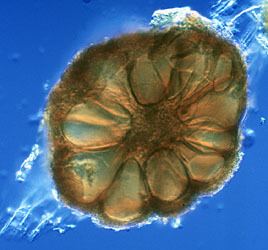
Work in this field is incomplete, and members of Glomus may be better suited to different genera or families.
Molecular biology
The biochemical and genetic characterization of the Glomeromycota has been hindered by their biotrophic nature, which impedes laboratory culturing. This obstacle was eventually surpassed with the use of root cultures. The first mycorrhizal gene to be sequenced was the small-subunit ribosomal RNA (SSU rRNA). This gene is highly conserved and commonly used in phylogenetic studies so was isolated from spores of each taxonomic group before amplification through the polymerase chain reaction (PCR). A metatranscriptomic survey of the Sevilleta Arid Lands found that 5.4% of the fungal rRNA reads mapped to Glomeromycota. This result was inconsistent with previous PCR-based studies of community structure in the region; suggesting that previous PCR-based studies may have underestimated Glomeromycota abundance due to amplification biases.
